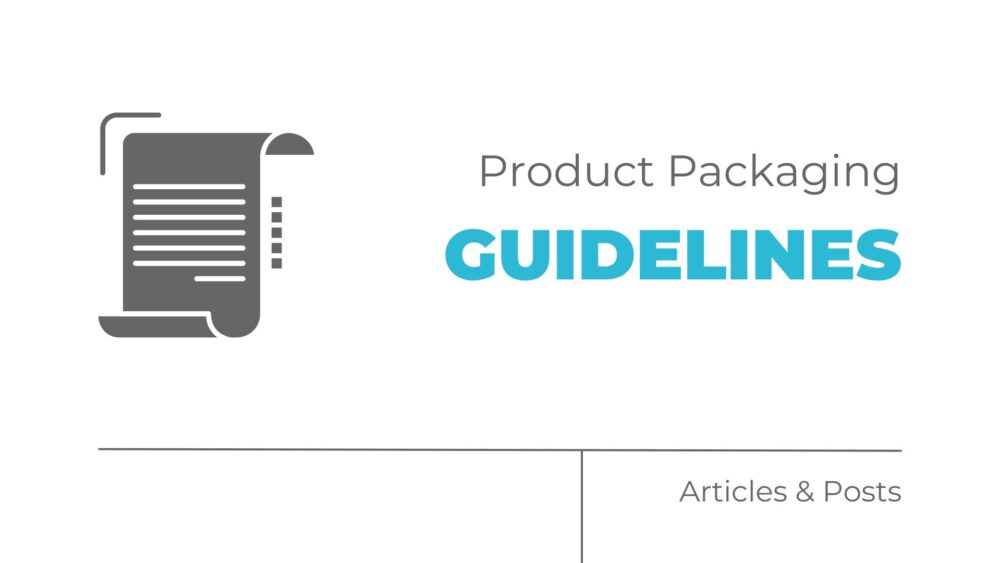Launching a new product into your marketing, and want to make sure your packaging is amazing?
As you prepare to unveil your masterpiece to the world, understanding the basic product packaging guidelines becomes imperative.
Product packaging guidelines encompass a set of principles and considerations aimed at creating effective, attractive, and functional packaging for products.
These guidelines are essential for businesses looking to enhance their brand presence, communicate essential information to consumers, ensure product safety and integrity, and differentiate themselves in a competitive market.
Let’s delve deeper into what these guidelines are all about:
Focus Here: What are the 5 considerations when making packaging?
Packaging should really be considered a brand element, just like your logo.
Here are 5 of the most important things to focus on when designing your packaging:
- Brand Identity and Storytelling: Your packaging should reflect your brand’s identity and communicate its story effectively. Consider the graphic design, colors, fonts, and imagery that align with your brand ethos.
- Functionality and Practicality: While aesthetics are important, practicality shouldn’t be compromised. Your packaging should be user-friendly, easy to open, store, and transport.
- Target Audience: Know your audience inside out. Tailor your packaging design to resonate with their preferences, lifestyle, and aspirations. What appeals to millennials might not captivate baby boomers.
- Differentiation and Stand Out: In a sea of products, yours should stand out like a beacon. Unique shapes, textures, or innovative features can catch the eye and pique curiosity.
- Sustainability: With the world becoming increasingly environmentally conscious, sustainable packaging isn’t just a trend; it’s a necessity. Opt for materials that are eco-friendly and biodegradable, showcasing your commitment to a greener future.
So consider these and evaluate your packaging improvements from there.
Don’t Do This: What are the basic mistakes while packaging?
What not to do is just as important as knowing what to do.
Beware of these pitfalls of product packaging.
- Overcomplicating Design: Sometimes, less is more. Overly intricate designs can clutter the packaging and confuse consumers rather than attract them.
- Ignoring Brand Consistency: Your packaging should seamlessly align with your brand’s visual identity across all platforms. Inconsistencies can dilute brand recognition and confuse consumers.
- Poor Quality Materials: Inferior quality materials not only compromise the product’s integrity but also reflect poorly on your brand. Invest in materials that exude quality and durability.
- Lack of Information: Essential product information, such as ingredients, usage instructions, and safety warnings, should be clearly visible. Failure to provide pertinent details can erode consumer trust.
- Neglecting Functionality: Aesthetics should never overshadow functionality. Complicated or impractical packaging can frustrate consumers and deter repeat purchases.
Food Specifics: What are the requirements of a food package?
Food is a unique and specific packaging area that depends on some essential concepts:
- Safety and Hygiene: Food packaging must ensure the safety and hygiene of the product. It should prevent contamination, preserve freshness, and comply with food safety regulations.
- Nutritional Information: Clear and accurate nutritional information is indispensable for consumers to make informed choices. Include details such as ingredients, allergens, and nutritional values per serving.
- Sealability and Tamper Resistance: Food packaging should be sealable to maintain freshness and prevent tampering. Tamper-evident seals reassure consumers of the product’s integrity.
- Storage and Handling Instructions: Provide clear instructions on how to store and handle the product to maintain its quality and safety. Different foods may require specific storage conditions.
- Sustainability: Given the environmental impact of packaging waste, sustainable food packaging is paramount. Choose materials that are recyclable, compostable, or reusable wherever possible.
So make sure you consider all the facets of packaging food and make sure that everything complies with the FDA as well.
At the End of the Day
While these guidelines offer invaluable insights, they’re just the tip of the iceberg.
Crafting packaging that captivates, informs, and delights requires a skilled hand and a creative mind.
A professional packaging consultant or designer possesses the expertise to transform your vision into a tangible masterpiece, ensuring your product stands out in a crowded marketplace.
So consider enlisting the expertise of a packaging designer to elevate your brand and leave a lasting impression on consumers’ minds.
After all, great packaging isn’t just about wrapping; it’s about wrapping your brand in excellence.
If you need help, feel free to contact your Atlanta agency and we’ll get you moving in no time.


Comments are closed.